SME Finance Policy Guide
SME Finance Policy Guide
SME Finance Policy Guide
Create successful ePaper yourself
Turn your PDF publications into a flip-book with our unique Google optimized e-Paper software.
G-20 <strong>SME</strong> FINANCE POLICY GUIDE<br />
43<br />
equity investors; and (iv) the size of both the private<br />
sector and the qualified institutional investor community<br />
is sufficiently large to support the growth of the<br />
market generally. 50<br />
Experience suggests that it is important to get the<br />
details of the market micro-structure right in order for<br />
an <strong>SME</strong> exchange to function effectively and become a<br />
venue where <strong>SME</strong>s can readily access the capital they<br />
require. The following mitigate against success and<br />
should be avoided:<br />
• Imposing expensive requirements such as maximum<br />
bid-ask spreads;<br />
• Applying trading regulations that are more relevant<br />
for larger companies and do not provide incentives<br />
for market participants to get involved with smaller<br />
companies; and<br />
• Failing to address relatively high issuance and trading<br />
costs caused by the introduction of systems and<br />
technologies developed for large-cap shares.<br />
It is important to develop less formal, more lightlyregulated<br />
capital markets that can cater largely to <strong>SME</strong>s.<br />
In Kenya, where there is an informal and largely<br />
unregulated capital market that caters mainly to <strong>SME</strong>s,<br />
a number of small companies have been able to raise<br />
capital from local investors such as private equity<br />
firms. While aware of its existence, the securities<br />
market regulator in Kenya does not regulate the activity<br />
in this market, but at the same time appears reluctant<br />
to see it disappear altogether or close down.<br />
A variety of other suggested policies have potential to<br />
increase listings and liquidity on <strong>SME</strong> exchanges,<br />
including:<br />
• The size of qualified <strong>SME</strong>s should not be capped at<br />
very low levels, as this may have adverse effects<br />
on liquidity and discourage the participation of<br />
fund managers;<br />
• The public float should have a minimum size, as an<br />
excessively low float will also constrain liquidity.<br />
Some successful <strong>SME</strong> exchanges impose a minimum<br />
float of 10 percent, combined with commitments of<br />
market-making and research by the broker;<br />
• A large minimum number of shareholders may be<br />
necessary to improve liquidity;<br />
• Lock-up periods of 6-12 months or longer during<br />
which certain shareholders (with 5 percent or more<br />
of the shares) cannot sell their stake following an<br />
IPO can prevent the early exit of corporate insiders<br />
and curtail insider trading; and<br />
• Governments might consider tax incentives for <strong>SME</strong>s<br />
that go public.<br />
In addition to less formal markets such as those<br />
described above, another approach that may be more<br />
suitable for meeting the needs of <strong>SME</strong>s in smaller<br />
economies is to promote the establishment of regional<br />
<strong>SME</strong> funds, or in some cases to encourage eligible <strong>SME</strong>s<br />
to consider using other nearby or regional stock markets<br />
as a venue where they may be able to raise the<br />
funding they need. Particularly for <strong>SME</strong>s located in<br />
smaller economies, regional approaches like these may<br />
be the most, if not the only, suitable way to access<br />
equity capital.<br />
Priorities and challenges for LDCs<br />
In developing economies, where the financial sector is<br />
typically characterized by marked weaknesses that constrain<br />
the access to finance, private equity can be a valuable<br />
source of stable, longer-term financing for some<br />
firms. This is particularly true in economies where<br />
public equity and bond markets are not accessible other<br />
than to a handful of companies, and where bank credit<br />
is expensive and provided primarily on a short-term<br />
basis, when available at all. The “smart-money” features<br />
of private equity investments and the selection of investment<br />
targets are particularly valuable for economies<br />
where business and management expertise constitute<br />
scarce commodities. This financing tool has a direct<br />
impact on the active management of the firm via the<br />
value created post-investment, which in turn has potential<br />
spill-over effects to the rest of the economy. It<br />
enhances value by fostering innovation and access to<br />
markets, building capacity at the management level in<br />
50 Mako, 2010



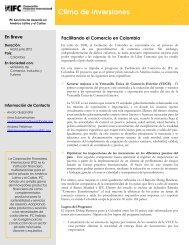
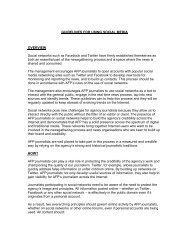
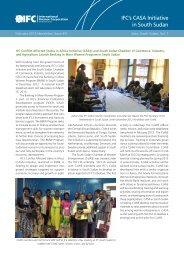

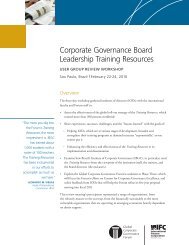




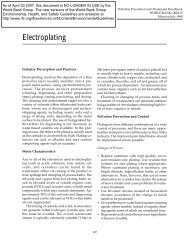

![Print a two-page fact sheet on this project [PDF] - IFC](https://img.yumpu.com/43449799/1/190x245/print-a-two-page-fact-sheet-on-this-project-pdf-ifc.jpg?quality=85)


